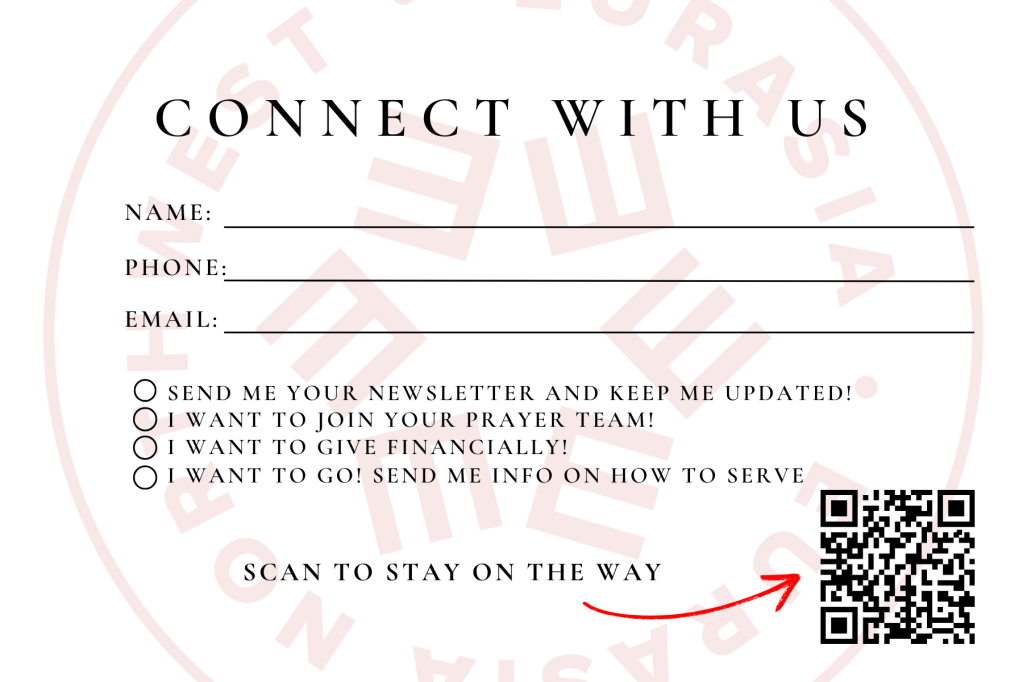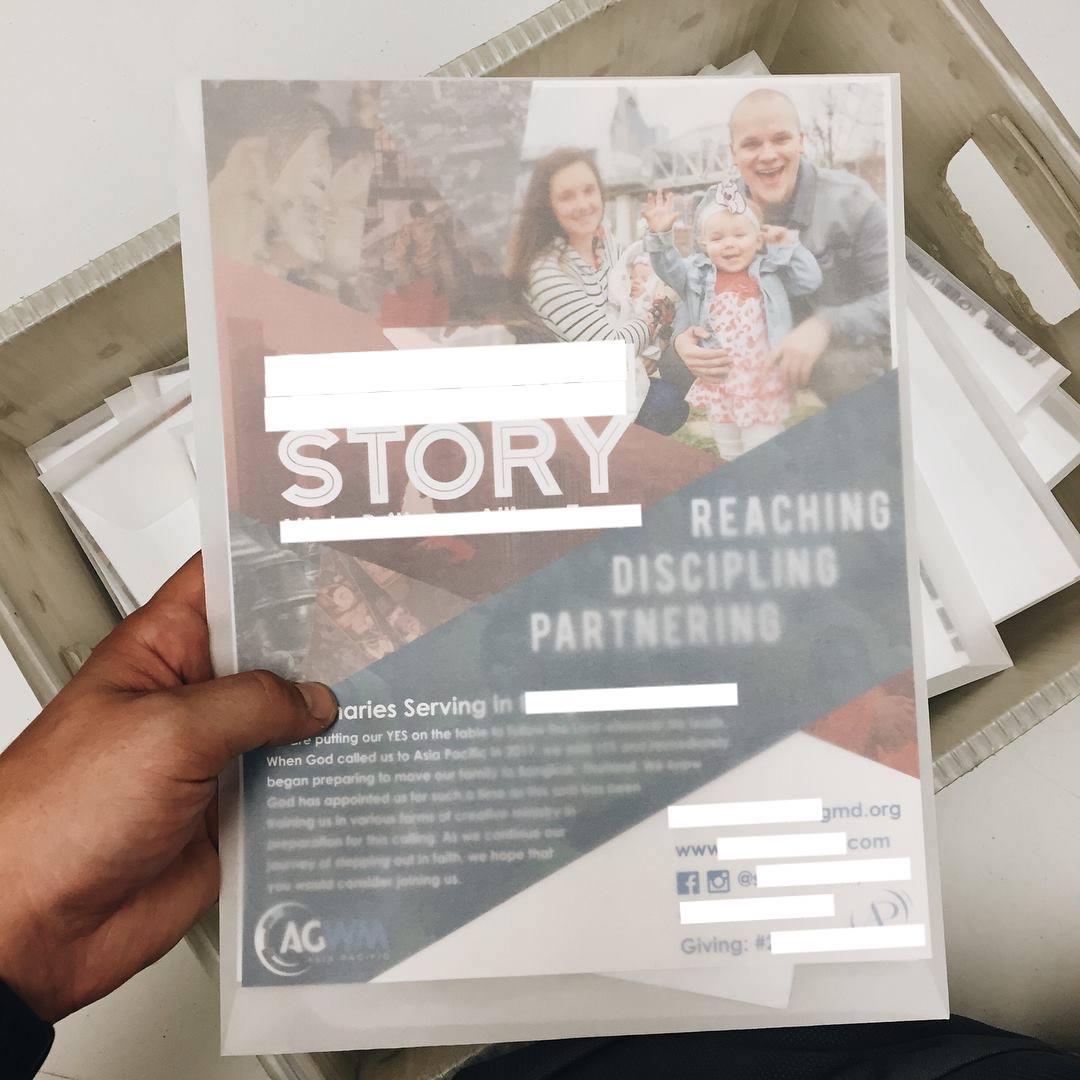Hey guys, I’ve posted this several times over the years with some tweaks ,and thought I would again. I think this is one of the most important topics in the area of support raising there is and thus — here it is again! Easy ways to stay connected with your partners while you are busy in full time ministry! – JF
Here’s a statistic that Bill Dillon, a guru in the support raising world and author of People Raising, has that I think you’ll find potent:
For every 100 people that stop supporting you:
66% of people stop giving because they think you don’t care about them
15% are unhappy with your organization
15% transfer their giving somewhere else
4% move away or die
Woah.
When I train missionaries on how to raise their support I tend to stay away from the word “fundraising” for many reasons, and when I really think about it — this statistic is at the heart of all of my reasons. Basically, no one wants to invest in something that yields no return. If an individual gives a worker monthly support and feels as though the worker could care less about their giving, they will likely go somewhere else with their giving dollars.
And in my opinion, they should.
Ouch! Why you ask? Because the reason donors are investing in the Great Commission is because they are called to be a vital part of the Great Commission too. And if they are called to be a part of the Great Commission, why should they be made to feel as though their “vital part” is on the sidelines and forgotten?
I believe that one reason we forget to invest in the relationships we have with our financial partners is because we forget (or perhaps don’t have the paradigm) that they are as vital to the work that we are doing as we (as ministers) are. That being said, many christian workers on financial support struggle in the area of continually connecting with their financial partners even if they have a high value for their relationships with them.
It makes sense. We are all busy. Ministers are typically very busy. I totally get it.
As much as I understand, I also believe it isn’t a valid excuse. There are so many easy ways to connect across continents in our world. As such, I would like to offer up 10 suggestions on how workers on financial support can continually, quickly, and easily connect with churches and individuals who financially invest in the kingdom work they are doing.
10 Ways to Connect
1. The Quarterly Newsletter
Here’s a no-brainer: Send your newsletters. You should do a minimum of four a year, but it’s probably better to do one every other month. Keep them short and talk way more about ministry than personal things. Include pictures of active ministry (no vacation spots). Think through ways to make Newsletters interesting and stand out. Elements such as videos, video messaging, QR codes to fun things like Spotify playlists, book recommendations, or sending out in a unique way goes a long way!
2. Short Email or Letter
When you get on the field, pick 10-15 financial partners each month and email them (or DM) a QUICK and SHORT personal hello/touch base. For example:
“Hi Sally, just wanted to touch base with you and see how you have been doing. You and Chuck are on our prayer list for this month and we are wondering if you have any updates or requests? Things here are going wonderful. We just finished with our building project and couldn’t be more excited to receive students this coming fall. There will be 10! Would you pray specifically for the students with us this month as we launch? Hope you all are well and let us know how we can be in prayer for you.” – Jenn
See…how painful is that? It took me all of two minutes to write that… You may be saying, but what happens when they write back? If they do, take another minute of your day to promptly reply to those who responded to your email. If all 10 respond it will take you around 15-20 minutes to respond to everyone. Then, take the time to mention them in your prayers and follow up with that as you have time and God leads. Keep a simple notebook. Write them down. It will make all of the difference and mean so much to the people spending so much time praying for you.
Once you have gone through your 10-15 partners each month, circle back around your list. Put these on some sort of white board in your room or house to remind you, or put it into a calendar each month. Whatever you do, calendarize it in some way.
3. Postcards and Presents
Send small gifts or postcards to your financial partners. Tell them thank you for their continuing support.
I recently received a postcard from a friend vacationing in Costa Rica. That postcard remained on my fridge for 2 months for two reasons: (1) My friend thought of me from a far off destination and it made my day getting that postcard! (2) It was beautiful! Personally, I’m a sucker for a pretty print of any far off destination.
If you have children, enlist their help and artistic skills! Taking it a step further, what would it look like for your kids to work on some personalized paintings or drawings to give to partners?! (Bunny trail thought)
Small gifts do not have to cost much to mean a lot. Pins, stickers, Christmas ornaments, gift cards for a cup of coffee…all of it can make a huge impact.
4. Stay Active on Social Media
- If you don’t already have one, create a Facebook page or hidden group. Stay active on it while you are on the field. Pictures, prayer updates, short videos, scripture verses, and praise reports are all fantastic. *If you are somewhere sensitive keep that in mind while posting and follow the rules of your organization.
- Consider getting onto Instagram, Twitter, TikTok (or whatever is up and coming as you read this!) as well! This is not for everyone, and typically I say to start with one social media outlet (probably Facebook – yes, it’s still relevant somehow!) and do it well. However if you have the time and know-how try one or both of these. I love posting on Twitter and have a personal Instagram page as a creative outlet. Both have been effective in communicating with friends and helping me to network on a larger scale.
5. I’m Thinking Of You
Sometimes as I listen to audio sermons, worship sets, podcasts, or scriptures, I’ll check in with God and ask if He would like me to share any of those with my friends, family, or financial partners. If I feel prompted, I’ll send that sermon or verse to a friend on Facebook with a little message. These have to make sense and the sermons probably shouldn’t be overly convicting on major sins or anything. (Don’t imply that your friend has a problem). Use common sense of course! All that to say — just letting someone know you are thinking about them can really show you care.
6. The Church Letter or Video
Write a short letter to the churches that financially partner with you. Put a note in to the pastor to please read where he feels it appropriate to the congregation (small groups, prayer groups, Sunday school). If you don’t have time for a letter, create a quick video on your smart phone or computer and email it to the pastor. Ask the pastor to share that with his congregation or prayer group if possible.
7. Events
When you come back home, hold an event in key areas where your financial partners are. During the event provide desserts and coffee. Share stories from the field, answer any questions, tell them about your future plans, and thank them, thank them, and thank them.
These events can be as elaborate or simple as you want to make them. I would of course error on the side of taking care of your important guests by providing refreshments and some sort of dessert or snack – these also provide an incentive for your guests to come.
8. Face to Face
In addition to the church event, when you come home set up one-on-one coffee times with pastors and friends and family that have supported you. Thank them and catch up on their lives while you were gone. Be relational and intentional. Really, this shouldn’t be optional!
9. FaceTime / Zoom
Are you spending some time on FaceTime/ Zoom with your far away family and friends? Why not pick 6-12 financial partners per year to FaceTime / Zoom while on the field? This is particularly good practice with financial partners that are giving sizable amounts or with churches and small groups that are partnering financially. Give them a real-time live update on where and how you are. Take them into an actual ministry event via Zoom / FaceTime on your phone if you can. They will be floored at your thoughtfulness and most likely continue to financially partner you throughout assignments to come.
10. Text them!
There are multiple programs available that will allow you to set up video and picture messaging while on the field. If you have a urgent prayer request, why not send a group text message out to your financial and prayer partners with a picture detailing your prayer need? If you have a praise report, send a text and allow them to celebrate with you (of course, keep in mind time zone differences so that you are not texting them at 2:00am)!
In Closing
If you are a worker on financial support, I hope that these simple ideas to connect with your partnership base help you. Let’s remind our financial partners that they are important to us and to the Great Commission! Let’s keep our attrition rates up with our financial partners by spending just a little time letting them know that we care. Let’s value them! Let’s realize that they are vital part of what we do. Amen? Amen.



































 o do one before hand promote the time your event will be taking place, and take care to choose a time that works well for your financial partners. When you do a Facebook Live event, make it a guided Q&A and consider doing your Facebook Live in an interesting place. That Facebook Live will record as a video so anyone not able to make the time can view later!
o do one before hand promote the time your event will be taking place, and take care to choose a time that works well for your financial partners. When you do a Facebook Live event, make it a guided Q&A and consider doing your Facebook Live in an interesting place. That Facebook Live will record as a video so anyone not able to make the time can view later! If you don’t have time for a letter, create a quick video on your smart phone or computer and email it to the pastor. Ask the pastor to share that with his congregation or prayer group if possible.
If you don’t have time for a letter, create a quick video on your smart phone or computer and email it to the pastor. Ask the pastor to share that with his congregation or prayer group if possible.



